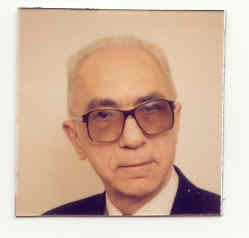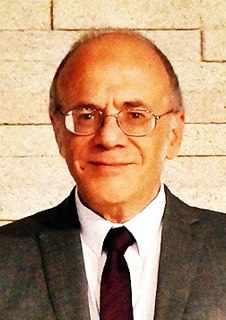Related Research Articles

In Christianity, Christology, translated literally from Greek as "the study of Christ", is a branch of theology that concerns Jesus. Different denominations have different opinions on questions like whether Jesus was human, divine, or both, and as a messiah what his role would be in the freeing of the Jewish people from foreign rulers or in the prophesied Kingdom of God, and in the salvation from what would otherwise be the consequences of sin.

The Gospel of John, also called the Gospel according to John, or simply John, is the fourth of the four canonical gospels. It contains a highly schematic account of the ministry of Jesus, with seven "signs" culminating in the raising of Lazarus and seven "I am" discourses culminating in Thomas' proclamation of the risen Jesus as "my Lord and my God". John's account contains Jesus' Farewell Discourse, in which he speaks plainly to his apostles before his crucifixion. The gospel's concluding verses set out its purpose, "that you may believe that Jesus is the Christ, the Son of God, and that believing you may have life in his name."

Jacques Dupuis was a Belgian Jesuit priest and theologian. He spent several decades in India and beginning in 1984 taught at the Pontifical Gregorian University in Rome.

The Jesus Seminar was an American group of about 50 critical biblical scholars and 100 laymen founded in 1985 by Robert Funk that originated under the auspices of the Westar Institute. The seminar was very active through the 1980s and 1990s, and into the early 21st century.

The empty tomb is the Christian tradition that women coming to the tomb of Jesus on the third day after his crucifixion found it empty. The story is found in all four gospels, but beyond this basic outline they agree on little. However, the whole death, burial, and resurrection narrative predates the gospels and Paul's letters via oral traditions. The gospel authors' usage of standard literary, historical, and biographical compositional practices of their day along with their use of multiple sources account for much of the differences, which were usually over peripheral details. Mark's Gospel, in its original ending, the women who discover the tomb flee, telling no one, after meeting a young man who he tells them that Jesus will meet the disciples in Galilee; Matthew introduces guards and a curious doublet whereby the women are told twice, by angels and then by Jesus, that he will meet the disciples in Galilee; Luke changes Mark's one "young man" to two, adds Peter's inspection of the tomb, and deletes the promise that Jesus would meet his disciples in Galilee; John reduces the women to the solitary Mary Magdalene and introduces the "beloved disciple" who visits the tomb with Peter and is the first to understand its significance.

The Farrer hypothesis is a possible solution to the synoptic problem. The theory is that the Gospel of Mark was written first, followed by the Gospel of Matthew and then by the Gospel of Luke.
Donald Arthur Carson is a Reformed biblical scholar. He is a Distinguished Emeritus Professor of New Testament at Trinity Evangelical Divinity School and president and co-founder of the Gospel Coalition. He has written or edited about sixty books and currently serves as president of the Evangelical Theological Society.

The swoon hypothesis is any of a number of ideas that aim to explain the resurrection of Jesus, proposing that Jesus did not die on the cross, but merely fell unconscious ("swooned"), and was later revived in the tomb in the same mortal body. This 200-year-old hypothesis is still the subject of debate in popular circles but the scholarly literature considers it uncontroversial that Jesus died during the process of crucifixion.

The Jesus Mysteries: Was the "Original Jesus" a Pagan God? is a 1999 book by British authors Timothy Freke and Peter Gandy, which advances the argument that early Christianity originated as a Greco-Roman mystery cult and that Jesus was invented by early Christians based on an alleged pagan cult of a dying and rising "godman" known as Osiris-Dionysus, whose worship the authors claim was manifested in the cults of Osiris, Dionysus, Attis, and Mithras.

Richard John Bauckham is an English Anglican scholar in theology, historical theology and New Testament studies, specialising in New Testament Christology and the Gospel of John. He is a senior scholar at Ridley Hall, Cambridge.
Reginald Horace Fuller (1915–2007) was an Anglo-American biblical scholar, ecumenist, and Anglican priest. His works are recognized for their consequential analysis of New Testament Christology. One aspect of his work is on the relation of Jesus to the early church and the church today. For this, his analysis, which uses the historical-critical method, has been described as neo-orthodox.
Peter Eric Enns is an American Biblical scholar and theologian. He has written widely on hermeneutics, Christianity and science, historicity of the Bible, and Old Testament interpretation. Outside of his academic work Enns is a contributor to HuffPost and Patheos. He has also worked with Francis Collins' The BioLogos Foundation. His book Inspiration and Incarnation challenged conservative/mainstream Evangelical methods of biblical interpretation. His book The Evolution of Adam questions the belief that Adam was a historical figure. He also wrote The Bible Tells Me So: Why Defending Scripture Has Made Us Unable to Read It and The Sin of Certainty: Why God Desires Our Trust More than Our 'Correct' Beliefs.
Chapters 10, 11, and 12 in the Book of Daniel make up Daniel's final vision, describing a series of conflicts between the unnamed "King of the North" and "King of the South" leading to the "time of the end", when Israel will be vindicated and the dead raised, some to everlasting life and some to shame and everlasting contempt.
Brian Edward Daley, S.J. is an American Catholic priest, Jesuit, and theologian. He is currently the Catherine F. Huisking Professor of Theology (Emeritus) at the University of Notre Dame and was the recipient of a Ratzinger Prize for Theology in 2012.
In Christian theology, Jesus is sometimes referred to by the title Redeemer. This refers to the salvation he is believed to have accomplished, and is based on the metaphor of redemption, or "buying back". In the New Testament, redemption is used to refer both to deliverance from sin and to freedom from captivity.
Pheme Perkins is a Professor of Theology at Boston College, where she has been teaching since 1972. She is a nationally recognized expert on the Greco-Roman cultural setting of early Christianity, as well as the Pauline Epistles and Gnosticism.

Gerald Glynn O'Collins SJ AC is an Australian Jesuit priest, author, academic and educator. He was a research professor and writer-in-residence at the Jesuit Theological College (JTC) in Parkville, Victoria, and a research professor in theology at St Mary's University College in Twickenham. For more than three decades, he was professor of systematic and fundamental theology at the Pontifical Gregorian University (Rome).

Christology: A Biblical, Historical, and Systematic Study of Jesus is a 2009 theological book by the Australian Jesuit priest and academic Gerald O'Collins. This work was originally published in 1995 with the title Christology: A Biblical, Historical, and Systematic Study of Jesus Christ, but the author thoroughly revised the whole text in 2009 to take account of the numerous biblical, historical, and systematic studies of Jesus that appeared following its first edition.
Andrew T. Lincoln is a British New Testament scholar who serves as Emeritus Professor of New Testament at the University of Gloucestershire.

Abraham Serving the Three Angels is a 1646 panel painting in etching by Rembrandt. The scene depicts Abraham, it is based on an episode from the Book of Genesis and it has Mughal influence. Today it is in a private collection since it was bought in an auction in 1848 for £64. Before that its owners were Ferdinand Bol, a student of Rembrandt, the Dutch art collector and Mayor of Amsterdam, Jan Six as well as Benjamin West, an American artist.
References
- 1 2 Wilkins, John. A Summit Observed, in Davis, Stephen T., Kendall, Daniel and O'Collins, Gerald (1998) The Resurrection: An Interdisciplinary Symposium on the Resurrection of Jesus. Oxford: Oxford University Press
- 1 2 Briggs, David. Scholars discusses relevance of belief in resurrection. The Fresno Bee, Apr. 13, 1996
- ↑ Harrington, Daniel J. "The Resurrection." America, vol. 178, no. 7, 7 Mar. 1998, pp. 23+
- ↑ Levin, Martin The search for the historical Jesus looses a tiger in the temple Climate of Ideas. The Globe and Mail, Apr. 13, 1996
- 1 2 3 Nineham, D. (1998). [Review of The Resurrection. An Interdisciplinary Symposium on the Resurrection of Jesus, by S. T. Davis, D. Kendall, & G. O’Collins]. The Journal of Theological Studies, 49(2), 907–909. http://www.jstor.org/stable/23968844
- 1 2 3 Carson, D.A. The Resurrection: An Interdisciplinary Symposium on the Resurrection of Jesus. Christianity Today, Vol. 42 Issue 8, p67, 2p
- ↑ Mathewes, Charles. Book review: The Resurrection by Stephen Davis, Daniel Kendall and Gerald O'Collins. Journal of Religion, Vol. 79, No. 2 (Apr., 1999), pp. 306-307 https://www.jstor.org/stable/1206650